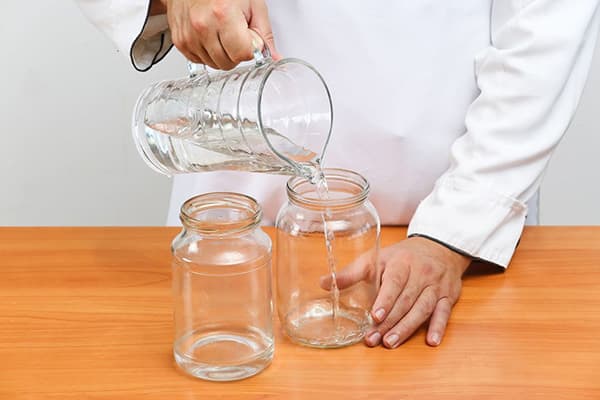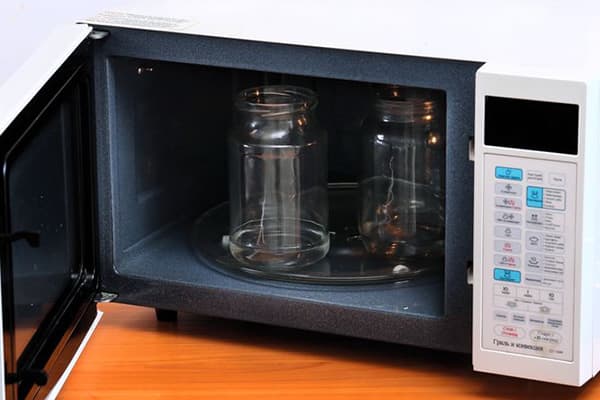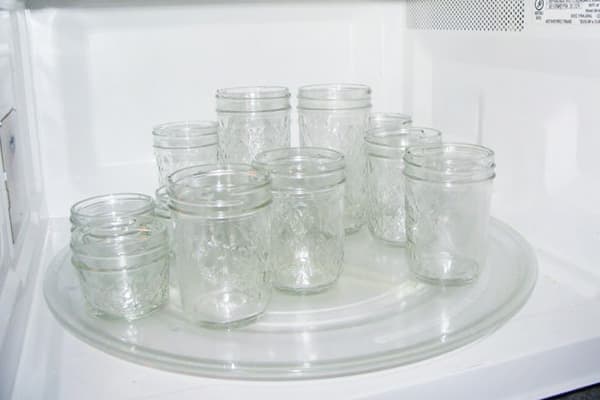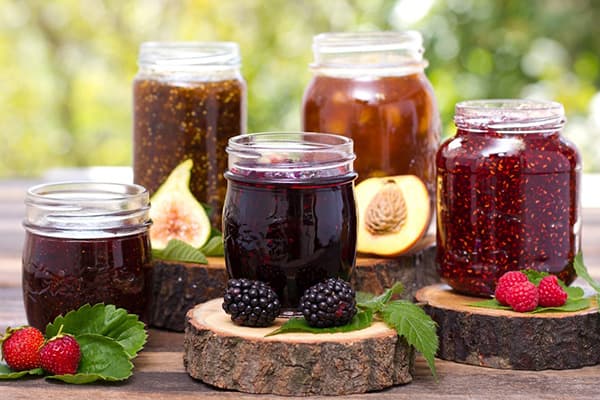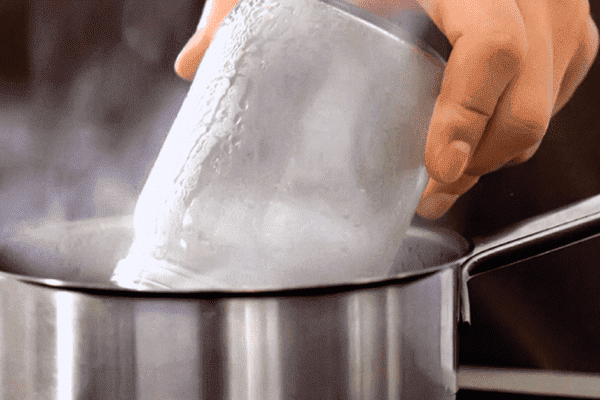Sterilizing jars in the microwave: how to prepare containers for sealing in 5 minutes?
An important stage in preparing canned food for the winter is disinfecting the dishes in a pan of boiling water. Is it possible to sterilize jars in the microwave, spending less time and effort? Fortunately, yes. If you follow the correct procedure and precautions, nothing will happen to the container. After all, a microwave oven was originally designed to heat food in various containers, including glass.
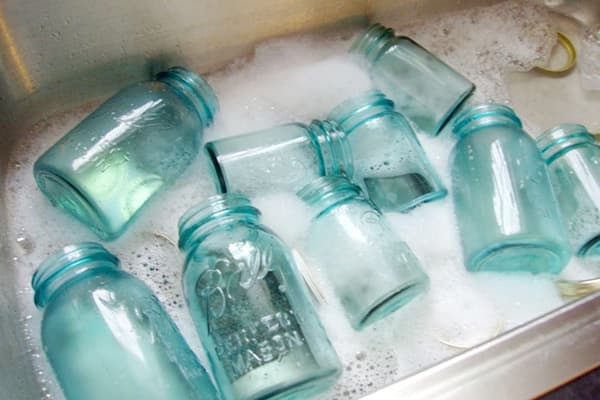
Preparing glass jars
If jars are not properly prepared for sterilization, the glass may break and damage the microwave oven. Then it will take a long time to pull out the fragments. Inspect the dishes for cracks, rough chips, dents, scratches, and unevenness.
If the jars remain intact, they should be thoroughly washed with warm water and baking soda. Scented detergents are not suitable. Particles of soap and chemical additives should not accidentally end up in products. Make sure that there are no streaks of baking soda left on the bottom and walls of the jars.
The glassware should then be dried on a clean towel.
The lids are sterilized separately from the jars in the classic way - in a pan of boiling water. Metal objects cannot be heated in a microwave oven.
You can sterilize jars in the microwave when the dishes are sparkling clean.
Sterilization process
The easiest way to disinfect jars is to expose them to high temperature water vapor. It completely envelops glass containers from the inside, destroying bacteria, fungi and viruses.
The sequence of actions is as follows:
- You need to pour clean water into the jars so that the bottom is covered by 3 centimeters. It is advisable to take distilled or settled liquid so that during sterilization a metallic deposit does not form on the container.
- Place the jars on the tray of the microwave oven. Make sure that they do not touch each other's walls.
- Set the microwave to 800 watts and press the start button.
How long does it take to sterilize glassware? This depends on the load level of the microwave oven and the volume of the container. It is enough to soak 3-4 half-liter jars for 3 minutes.
A 3-liter jar is sterilized for 4-5 minutes, after pouring half a mug of water into it and placing it on the tray sideways so that the liquid does not leak out.
Dry sterilization
Allows you to process jars using not only hot water steam, but also microwave rays. The dry sterilization method has a disadvantage - a higher risk of damage to glass containers.
The peculiarity of a microwave oven is that its rays only affect wet objects. You may have noticed an interesting paradox before: the liquid in the heated soup is hot, but the pieces of meat and vegetables are cold. The more moisture a product contains, the faster it warms up. Therefore, even with the dry sterilization method, a container of water is placed inside the microwave.
What should be done?
- Place a mug filled 70% with clean water in the center of the microwave oven tray. If you pour more liquid, it will spill down after boiling.
- Place empty jars around the mug.
- Set the microwave power to 700 watts and the timer to 5 minutes.
- Press the start button.
Some housewives claim that they sterilize jars completely dry and the glass containers do not deteriorate. However, they do not know that they risk damaging the electrical appliance itself.
How to get jars and start preserving food?
So, the timer on the microwave beeped, signaling the end of the sterilization process. Since the jars have become very hot, you need to remove them using an oven mitt, mittens or towel.
Do not pick up dishes by the neck. After sterilization, hot jars become fragile, so you need to take them out with both hands, grasping them by the walls. The towel should be dry and warm. The slightest change in temperature will cause the jar to burst and hot fragments will fly towards you. Be careful.
If you sterilized the container using a wet method, allow it to dry before storing. Prepare a clean towel. Place the cans sideways on it. This way, the dishes will dry faster than if you place them upside down on a towel.
After 15-20 minutes the jars are ready. They are ideal for rolling up jam, vegetables, mushrooms or meat stew.
How to sterilize dishes with preparations?
Most often, bacteria are contained in the products themselves intended for preservation. Even if you roll up meat, vegetables and berries in a sterilized glass jar, there remains a risk of pathogenic microorganisms multiplying inside and releasing waste products - toxins.
Let's look at how to protect yourself from food poisoning in the future.
Making jam:
- Fill a clean, dry jar 80% full with jam. You can’t pour more, otherwise the sweet sticky mass will spill onto the pan.
- Set the power to 800 watts, time – 6 minutes.
- Click on the start button.
- After the timer beeps, leave the jar of jam in the microwave for another 5 minutes. During this time, boil the metal lids in a pan of water.
- Remove the glass container with the treat from the microwave oven and roll up the lids.
Preparing salted vegetables and salads:
- Take two clean liter jars and fill them 50% full.
- Place the container in the microwave oven. Make sure that the glass walls do not touch each other.
- Set the wave power to 800 watts and the timer to 3 minutes.
- Turn on the microwave.
- After the timer beeps, leave the workpieces inside the microwave oven for another 6 minutes. During this time, sterilize the lids and fork.
- Carefully remove the pickle jars from the microwave. Using a clean fork, transfer vegetables (salad) from one sterilized glass jar to another. Cover food with lids.
Why is microwave sterilization better than traditional boiling?
Often simplified methods of familiar household chores cause people to mistrust just because they are new. Some housewives still sterilize containers “the old fashioned way,” even though they have a microwave oven at home. But in vain.
Sterilizing jars in the microwave has a number of advantages compared to conventional boiling:
- saves time;
- safe because housewives do not need to come into contact with boiling water;
- bacteria and fungi are additionally affected by microwave rays;
- maintains a pleasant microclimate in the kitchen: households no longer suffocate from hot water vapor.
Perhaps the only negative is energy consumption. But if a housewife needs to make 2-3 jars of jam, she won’t even notice the increase in money costs for electricity.
